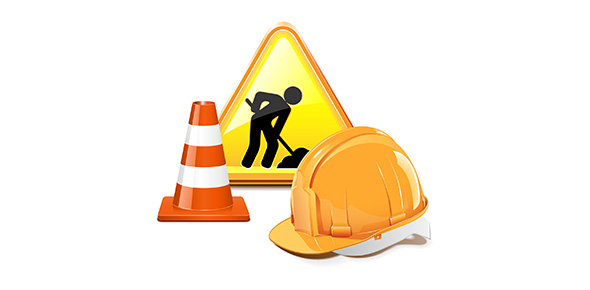Related Flashcards
Related Topics
Cards In This Set
| Front | Back |
|
How does a business create an organisational structure?
|
It does so by organising its internal structures to reflect the complexity of its activites and the way in which it deploys staff, and sets up lines of accountability and delegated authority to make decisions. As a business grows its admin and management processes will increase in complexity . Managers will to review there internal structures on a regular basis to ensure they are fit for purpose and continue to contribute to the efficient management of the orgainsation.
|
|
What does an internal structure within a business take into account when it is created?
|
- the relationship between individuals
- who has the authority to make decisions
- who carries out decisions
- how information is communicated
|
|
Explain principles of levels of power and authority within a hierachy
|
Power, authority and work are all delegated downwards , this is known as the chain of command.
The number of levels of authority will vary with the size of the organsation; large organisations have many levels of command where as small businesses have relatively few. Business must consider the number of levels it has, since each addtional level of management reduces the effectiveness of communication by 25%.
Communication follows the delegation of power, both up and down the organisation, and travels a great distance through many filters before reching the final recipient.
There is also the divison of labour whereby the the total work that needs to be carried to meet business objectives is defined into specialist areas ei personell, finance, marketing etc.
|
|
What is the span of control?
|
It refers to the number of subordinates working under a superior or manager.
|
|
What are the consideration with your chosen span of control?
|
-There should be a tight managerial control from the top.
- The physical and mental limitations to any single managers ability to control people and activities.
- The narrower the span, the more levels of hierachy (chain of command) needed.
|
|
What are the advantages of Narrow Span of Control?
|
Close supervision of subordinates
Tight Control
Better coordination of subordinates activities
Fast communication between superiors and subordinates.
Managers have more time to think and are less burdened with day-to-day problems.
|
|
What are the disadvantages of Narrow Span of Control?
|
May result in superiors being too closely involved in subordinates work.
Requires many levels of management and high costs
Excessive distance between bottom and top may lead to communications problems and low motivation among subordinates.
|
|
What are the advantages of Wider Span of Control?
|
Greater decision making authority for subordinates.
Possibly more job satisfaction and better motivation.
Usually lower costs involved in supervision
Fewer levels of management
|
|
What are the disadvantages of WiderSpan of Control?
|
Managers must be of high quality if problems of overload and loss of control are to be avoided.
|
|
What is Delayering?
|
Process whereby an organisation removes one or more layers of management and generates wide spans of control. Commonly a cost cutting exercise, but this may lead to more positive opportunites for staff to take on additional responsibilities and challenges ( ie personal growth).
|
|
What are the 4 types of orgainsational strutures?
|
Entrepreneurial
Characteristic of a small business organisation. Structure is organised around the owner-manager and is totally centralised with division of responsibility. It has the advantage of enabling the founder to control the devlopment and growth of the business. The disadvantage is owner-manager will not have specialist knowledge in certain areas and may be overburdened with all the responsibilities. Employees have direct access to their employer(s) and the level of direct control and supervison employee by the owner(s) is very high. Hierarchical/functional Each major business function has its own department/ hierarchy of management authority (personnel, marketing etc). One advantage is that specialised deptartments can offer higher level of expertise, moreover clear vertical chains of command assist control. However, functional departments tend to persue their own sectional interests. Lateral communicationand coordination may also be difficult. Matrix This structure enphasises getting people with particular specialist skills together into project teams. Staff are organised into project teams that match skills and experience to the needs of the project and all are managed by project manager, the staff may even be line managed by someone else as well from there own department However there is the risk of conflicting line and project responsibilities, also a complex structure may lead to confused and wasteful use of resources. Federal These firms consist of a virtually free-standing business with HQ providing coordination and some element of control. Balance of power between each federation member varies but HQ usually operates some key financial controls. Each business within the federal structure will have its own structures, and each may be different as they are seperate businesses. Advantages of federal structures include: - an entrepreneurial spirit can flourish in each business - bureaucracy is minimised. -hierarchy and long chains of command are avoided However , there is a risk of loss of direction and focus, with members pulling in different directions, moreover the authority of HQ may be resisted. |
|
What is lateral communication?
|
if(!numads)
var numads = 0;
/*console.log('position: ad01');
console.log('numads: 3');
console.log('skip: '+numads);*/
adsense_ads = new Array();
adsense_ads['ad01'] = new adsenseObject(3,false,false);
google_ad_client = 'pub-1549962111268759'; // substitute your client_id (pub-#)
google_ad_channel = '5022241727, 0278457917';
google_ad_output = 'js';
google_max_num_ads = '3';
google_ad_type = 'text';
//google_image_size = '728x90';
google_feedback = 'on';
google_adtest = 'off';
google_skip = numads;
google_hints = googAds.hints;
numads = numads + 3;
google_protectAndRun("ads_core.google_render_ad", google_handleError, google_render_ad);
Communication between people at the same hierarchical rank but in different functional areas of a business.
|
|
How do structures relate to workload and job allocation?
|
Sructures help create the structure within which workload is distrbuted between individuals. Structure ensures - or is designed to ensure:
- clear lines of accountability - set limits to workload - nature of the work each member of staff is allocated. Structures help to control workload and workflow. |
|
What are the 4 key management roles within the hierarchy of the organisations structure?
|
Supervisor
These workers are responsible for supervising and motivating a small number of subordinates, all of whom have to carry out a specific workload. Their role is to allocate workto their subordinates and ensure the work is carried out to the standard required of the organisation. There authority to make decisions will extend beyond this and are unlikely to have any financial responsibility. Team Leader Many organisations operate their business activities through teams or small groupsof staff, each member having specific function within the team. A team leader does not allocate jobs to individuals( already specified in their job descriptions) but ensure that the workload is fairly distributed, they have the resources to carry out the work and ensure deadlines are met. Manager These employees oversee a significant area of responsibility of work in the organisation (HR Manager, Transport Manager). They will have responsibility for staff, resources and developing and implementing plans for the successful operation of their areas. They generally have a significant amount of autonomy for significant decisions in their area, and may delegate some repsonsibilities to any team leaders/supervisors they manage. Directors A Limited Liability company is legal required to appoint one or more Directors. They are legally responsible for the strategic direction and operation of the business. They are appointed by shareholders. In large firms there may be Directors responsible for amnyt key areas (Finance Director) - but will not manage the day-to-day running of there area of the business. Their role is to set the strategic objectives and targets and delegate implementation to the managers they oversee. In small limited liability company directors are likely to have day-to-day management activity of the business. |
|
What should a structure within a business ensure?
|
- Business decisions can be made and implemented efficiently
- Decisions can be communicated throughout the organisation quickly. - There is effective management information flow. - Resources (especially finance) can be allocated efficiently across the organisation. |








